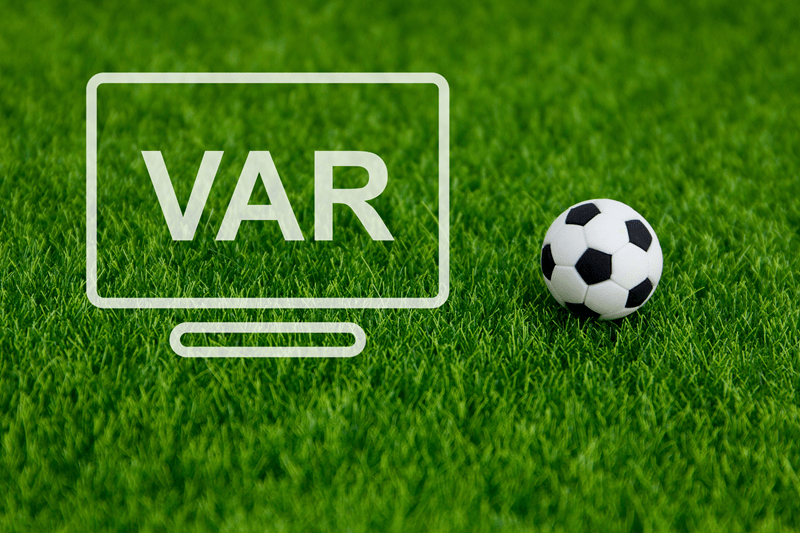FVS Football VAR System Rules and What They Really Mean

Football has significantly changed over time. The introduction of the VAR system is one of the most significant changes of recent times. Referees stopping and staring at their screens before making decisions have been witnessed by many fans who are either cheering or groaning. We shall discuss FVS football and the nature of the VAR system in this blog. We will define a VAR, examine the rules of a VAR, demonstrate how a video support benefits referees, and clarify what a VAR actually means to players and fans. It will bring you to a point where you will know the game more, and you will relate to each decision on the field.
FVS Football Overview And VAR System Introduction
The sphere of FVS football has never been dull, and it is characterized by rapid actions, amazing goals, and rather provocative choices. To ensure fairness in the game, referees have taken to technology referred to as the VAR system. It is known by many as a decision-checking instrument, although there is more than looking at a display.
What FVS Football Means To Fans
FVS football is not merely a game; it is a passion for millions of fans. Viewers and commentators analyze every tackle, every goal, and every foul. The VAR system has brought in a touch of suspense and excitement, and therefore, every decision is crucial. During referee consultations with VAR, fans usually take their breath until the referee makes a final call.
Why the VAR System Was Introduced
The VAR system was employed to minimize errors that may alter the result of games. Referees in FVS football are under tremendous pressure, and a single wrong decision can elicit debates over a period of days. The VAR system provides them with a second opportunity, with the aid of video support, to provide the necessary fairness and accuracy.
Also read: 10 Best Football Drills For Aspiring Football Players
VAR Definition And Basic Rules
The definition of the VAR is essential to every football fan. Not only is it a tool, it is a collection of rules and guidelines that are adhered to by referees throughout the game.
What VAR Definition Really Means
VAR stands for Video Assistant Referee. Its primary role is to help the main referee make the right decisions in certain situations. The var's meaning is simple: it is a backup system that uses technology to assist humans, not replace them. It’s like having an extra pair of eyes to ensure the game is fair.
When VAR Can Be Used
The VAR system is used only for specific events. These include:
- Goals and whether there were fouls in the build-up
- Penalty decisions
- Red card incidents
- Mistaken identity
By focusing on these critical moments, the VAR system ensures that the most game-changing decisions are carefully reviewed.
How the VAR System Works During FVS Football Matches
When a situation occurs, the VAR team reviews the footage. They communicate with the on-field referee through headsets. Sometimes, the referee watches the incident on a screen on the sidelines. This process may take a few minutes, but it helps avoid mistakes that could affect the outcome of the match.

Video Support And Its Role In FVS Football
Video support is the backbone of the VAR system. It allows referees to see incidents from multiple angles and in slow motion, making tough calls easier.
How Video Support Helps Referees
Referees are human, and mistakes happen. With video support, referees can:
- Check if a player was offside
- Verify if the ball completely crossed the goal line
Examples Of Video Support In Action
Imagine a player scores a goal, but another player may have touched the ball with their hand. Without video support, the referee might miss it. With the VAR system, the replay shows the exact moment, ensuring the correct call is made. This not only keeps the game fair but also adds drama and excitement for fans.
Suggested reading: The Evolution of Football: From Local to Global
VAR Meaning For Players And Coaches
The var meaning extends beyond referees. Players and coaches also feel its impact.
How Players React To VAR
Players often show a mix of emotions when the VAR system is used. Some feel relieved when a bad call is corrected. Others feel frustrated if a goal or penalty is overturned.
Impact On Coaching Decisions
Coaches use the VAR system to their advantage as well. They study video footage to understand referees’ tendencies and predict how specific actions will be judged.
Common Misunderstandings About the VAR System
Even with its benefits, the VAR system has critics. Many fans think it slows the game or removes emotions, but that is not the whole picture.
VAR System Does Not Replace Referees
Some individuals assume that the use of VAR decisions is conclusive and that nothing can be interpreted. As a matter of fact, the ultimate decision is taken by the on-field referee. The VAR system does not decide on its own, but it is there to assist in video evidence.
It Is Not Used For Every Foul Or Mistake
VAR is restricted to critical situations. Minor fouls or minorities are not discussed. This makes the game move along and makes sure that the system is not used on a regular basis.
VAR Can Change The Outcome, But Promotes Fairness
Yes, VAR may reverse a goal or penalty, and this sometimes leaves the fans shocked. However, its primary aim is to sustain equity. Any errors in FVS football may have enormous implications, and video support guarantees the fairness of the game.
Explore more: How to Master a Fantasy Football Game: A Beginner's Guide
Emotional Impact Of VAR On Fans And Viewers
The viewing of a match is an emotional process, and the VAR system has provided a new dimension to it.
Suspense And Excitement With VAR
Scenes when fans are waiting with their breaths halted are frequent and can be observed when referees review the VAR. Each replay generates tension, and thus the concluding decision feels dramatic and vital. This emotional thriller holds the viewers who are watching the screen till the referee makes the last call.
Mixed Reactions After VAR Decisions
The decision on VAR may result in euphoria or disappointment. On other occasions, fans celebrate when a goal is scored; on different occasions, they moan when it is disallowed. Such feelings indicate the extent to which FVS football is related to fans and how the system of VAR can affect each moment.
Conclusion
The VAR system has transformed the manner in which we watch and play in the FVS football. It is not only technology, it is a device of equity, precision, and thrill. With knowledge of var definition, video support, and var in its actual meaning, fans, players, and coaches can make use of the game with a better idea of what is right or wrong. The game of football will never lack surprises, happiness, and disappointment, but the use of the VAR system will make these moments as unbiased and exciting as possible. Whenever a referee stops the game, you will have the answer as to what is going on in the background, and all the matches will be more interesting.
This content was created by AI

